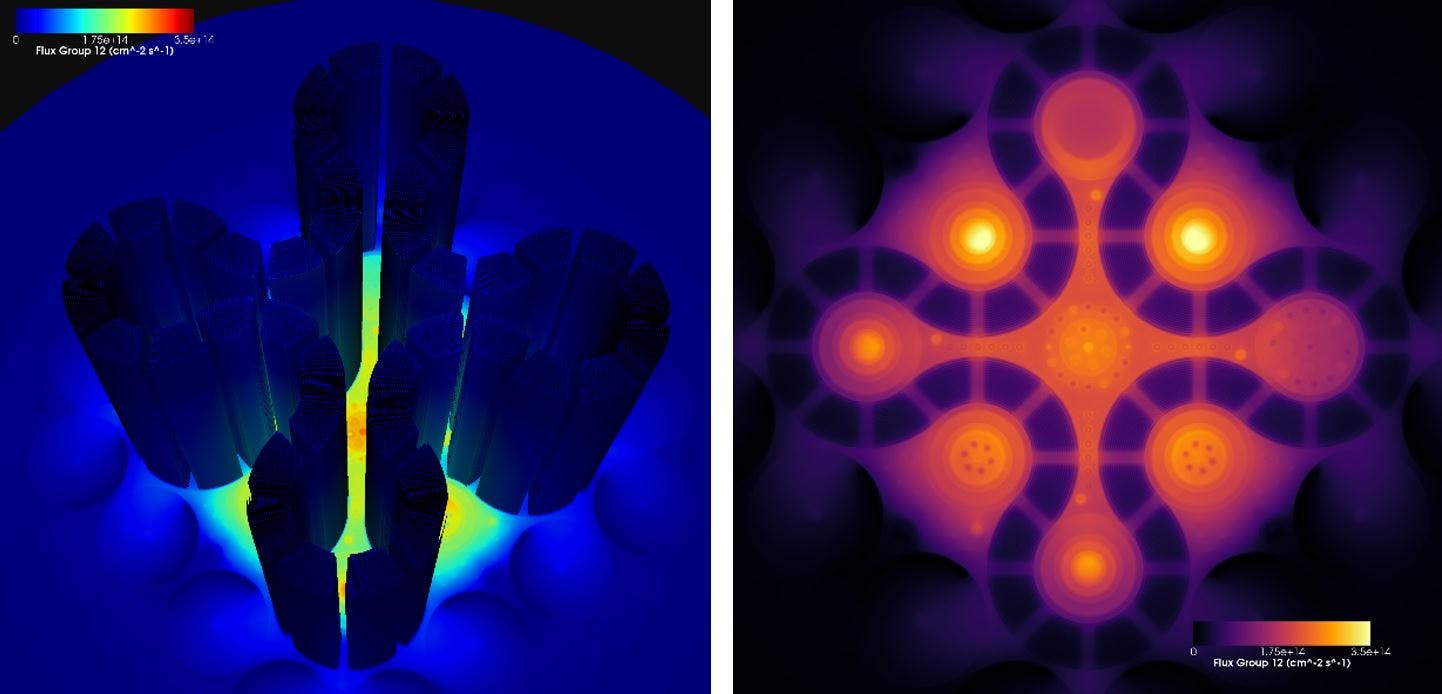The July 2021 issue of Nuclear Technology is devoted to MOOSE, the computational framework developed at Idaho National Laboratory (INL) that eases sophisticated analysis of everything from cutting-edge plastics to advanced nuclear fuels.
Nuclear Technology is the leading technical publication for the American Nuclear Society. Papers within it cover the practical applications of nuclear science, including all aspects of reactor technology such as operations, instrumentation, fuel and more. The journal also publishes research on medical uses, radiation detection, health physics, computer applications and other areas. Having an issue dedicated to one subject illustrates the significance of MOOSE.

The papers within the dedicated issue cover the use of MOOSE for a variety of applications. From very large applications, such as system-wide simulations of entire reactors, to much smaller ones, like modeling aging critical metal and concrete within an existing reactor, the special issue encompasses a range of topics. The wide array of topics makes it difficult to designate just a few key findings from the papers, according to Cody Permann, department manager for computational frameworks at INL.
“However, perhaps the overarching ‘finding’, or result, is that MOOSE is serious platform for performing cutting edge research or performing advanced engineering analysis,” he said. Permann’s group oversees MOOSE, which is open-source software with source code freely available to end users.
Permann added, “MOOSE is important to the industry. It’s a useful tool for the modeling and simulation of both current and next generation reactors.”
Adaptable to New Technology
MOOSE is useful, in part, because it easily handles new technology. With little effort, it can be extended so that it can deal with today’s light water reactor fleet as well as tomorrow’s microreactors and more advanced technologies, such as sodium-cooled reactor systems. Other existing tools are customized and suitable only for today’s reactors.
However, many of those other simulation tools are decades old, long before the current high-performance computing technology made systems with thousands and thousands of processing cores available. Hence, they cannot take advantage of the exponential increase in computing power that now puts the equivalent of a world record 1985 supercomputer into a palm-sized smartphone.
MOOSE, on the other hand, can put that power to work. It has run on tens of thousands of cores, with the flexibility to handle complex three-dimensional simulations. With this capability, MOOSE enables high fidelity simulations that produce results extremely close to what happens in real life. Thus, it saves time and money by allowing researchers to zero in on the most promising technologies or candidates.
Jason Hales is an INL computational mechanics and materials department manager, and he is involved primarily with nuclear fuel research. He noted that MOOSE offers scientists some significant advantages that make modeling and simulation easier. One is that MOOSE has a wide variety of easy-to-use APIs, application programming interfaces. So, if a researcher needs to have a piece of software talk to and interact with MOOSE, an API likely exists that will make the task easier.
Also, MOOSE manages connections to a solver, software that takes equations and uses numerical techniques to solve them. Those equations might describe, for example, how heat flows through a fuel rod or how that rod deforms under pressure. So, the solvers are a crucial part of modeling and simulation. However, getting solvers to work is not easy and scientists tackling a problem do not want to spend much time or effort making this vital part of the analysis process work.
Researchers would rather focus on their particular domain of interest, like what happens with nuclear fuel when it gets hot. In describing scientists’ attitude, Hales said, “We want the numerical solver to work. We don’t want to debug it. MOOSE handles that for us.”
Leading a Herd of Modeling and Simulation Tools
MOOSE forms the basis for Bison, the fuels performance code from INL that has been around for a decade and is used in many universities and research laboratories. Its longevity and widespread use are due in part to the power and flexibility of MOOSE, according to Hales.

Looking to the future, MOOSE’s strength and adaptability should grow, in part because of an emphasis placed on allowing non-MOOSE code to become part of the software ecosystem, according to April Jean Rogers Novak, an Argonne National Laboratory fellow. “There has been a significant evolution in the external application coupling interface that is used to integrate tools with the MOOSE framework,” she said.
At Argonne, research is underway looking at what goes on inside a pebble-bed reactor. Such reactors run on tennis-ball sized fuel pellets, or pebbles. Operating at a high temperature, pebble-bed reactors could achieve higher thermal efficiency than is possible with today’s light water nuclear power plants.
But before such a reactor is built, scientists must use modeling and simulation to understand how they operate. The better the simulation, the easier it is for scientists to pick out the design most likely to meet operational goals, such as cost per kilowatt produced. A more accurate model helps engineers see how the reactor will respond under a variety of conditions, such as those that might arise during extreme weather.
MOOSE allows the incorporation within it of tools that deal with particle transport along with others that simulate fluid flow. That combination makes it possible to analyze what goes on in a pebble bed reactor.
Finally, while MOOSE is starring in a journal covering nuclear applications, it can do much more. It can be and has been used in a number of different areas, such as modeling a potentially revolutionary polymer, analyzing ground water flow, computationally exploring geothermal activity, simulating mining operations and elsewhere.
“It’s a general-purpose framework that can be applied to a wide variety of physics problems,” Permann said in summing up MOOSE and its potential applications.
For more information about the special issue, please visit ans.org.
For more information about MOOSE, please visit mooseframework.inl.gov.







